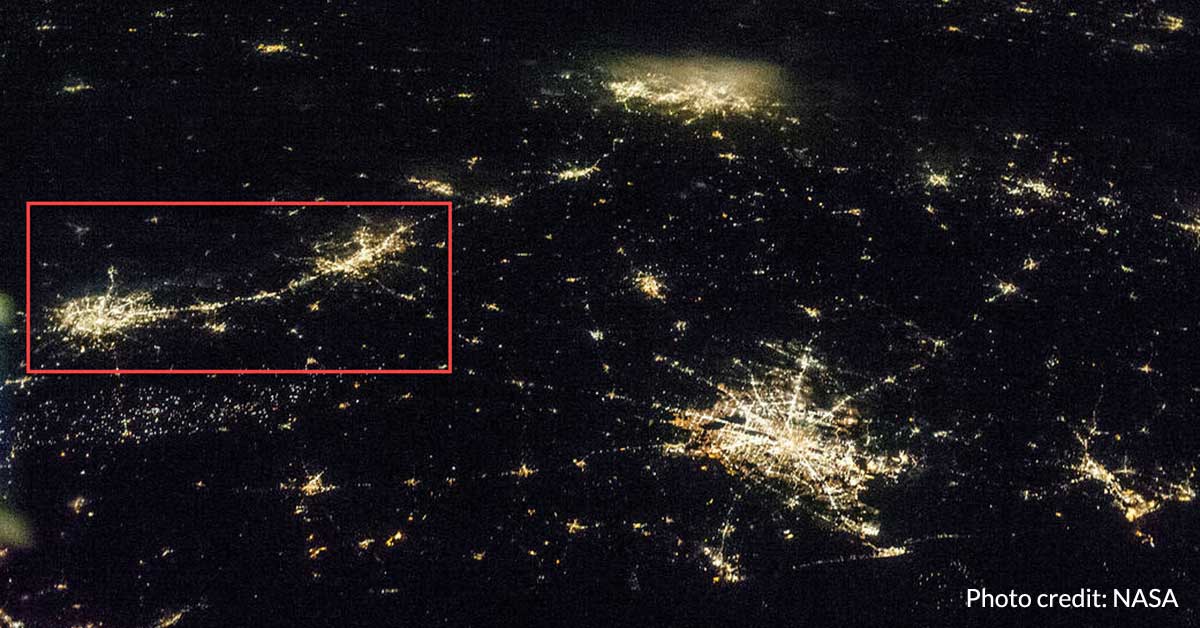
Satellite image of Texas showing Austin – San Antonio area compared to DFW and Houston
Employment growth led by STEM and financial services
A number of suburbs between Austin and San Antonio – including San Marcos, New Braunfels, Buda and Kyle – are growing rapidly. It is increasingly being predicted that the accelerated development could spawn a megaplex in the next two or three decades.
Austin has become a hotbed of jobs, with employment spiking 52% over Houston and Dallas-Fort Worth since 2000. During the same time, the city’s STEM industries have increased their workforce by 35%, which compares favorably against the 26% for San Francisco and 10% nationally. Employment in the business services sector has also risen to a substantial 87%, beating every other large city in the state. As job opportunities have increased, so has in-migration to Austin.
San Antonio’s job growth has exceeded 30% since 2000, marginally trailing Houston and thrice that of San Francisco. The Air Force bases and aerospace complexes in and around the city have been major contributors to STEM jobs, which have increased almost 29%, while employment in business services has expanded by 44%. In particular, San Antonio’s financial services sector has been growing at an accelerated pace, with the area being ranked among the country’s top ten financial centers by a Forbes survey. In-migration has grown in tandem, with educated millennials moving into what has traditionally been a city of old-timers.
This common link between the two cities, propelled by their individual, flourishing economies, could be creating the foundation for a ‘marriage’ or ‘coming together’ or however you would like to define such a ‘merger”. As the population boom continues and the net population of both cities moves closer to DFW, the early beginnings of a future metropolis can be potentially envisioned.
Some factors to ponder over
The DFW area is linked by a number of major highways; only one major highway (I-35) gets you from Austin to San Antonio. The 80 mile distance between the two cities is also a lot more than the 30 miles separating Dallas and Fort Worth.
The unique cultures of each city, some suspect, cannot be harmoniously blended as was possible with Dallas and Fort Worth. A homogeneous feel would come at the cost of each city’s distinctive identity. But one could also argue that Dallas and Fort Worth residents have, to some degree, maintained their own cultures and ways of doing things.
Most importantly, thought must be given to the possibility of an interdependent economy between two cities with their own different industries and labor force. It would be difficult to receive a designation resembling DFW from the Census Bureau unless 15 per cent of the workforce in Austin and San Antonio travels between the two cities on a daily basis.
Sure, some infrastructure investments can help. For instance, a high-speed rail that enables short, convenient commute times or a regional airport can create further links between the cities. Unfortunately, these endeavors (especially the rail) are met with a lot of opposition. However, the local governments of the two cities are also of the opinion that common challenges facing them can be solved jointly as a ‘single region’. Specifically, Austin and San Antonio face issues related to mobility, rising living costs (despite central Texas being a lot more affordable than the major metropolitan areas of New York and Los Angeles), infrastructure, water and transportation. Collaboration on common challenges is expected to bring the cities together, creating the possibility of a shared vision should the idea for a megalopolis start taking shape in the near future.



